I saw an article in the Daily Mail recently which stated that loss of habitat due to an increase in intensive farming was resulting in the severe decline in pollinating insects. My own observations this last three years would appear to bear this out. However I don't believe that is the whole story.
There's also the matter of the use of insecticides to make these intensive farm operations tick. The get rid of the pests there's no doubt about that but they also destroy beneficial insects like pollinators IE Bees and Butterflies.
Why does this matter you ask well I saw a study which estimated that if we succeeded in getting rid of all pollinating insects then we humans would follow their path to extinction within four years as our crops failed year on year due to their demise at our hands.
I had seen a Friends of the Earth offer for some free wild flower seeds and I put my name down to receive same. (I'm not digressing stick with me) I then received regular emails usually trying to get me to contribute to them on a monthly basis. Their last communication was full of praise for the European Union who were apparently responsible for measures to save our bees.
Shame on the bee-killers! Syngenta, Bayer, BASF
However when I checked this out I found it totally at odds with the facts. I looked up a site called Corporate Europe Observatory. They there detailed how for decades big pharmaceutical companies were able to lobby the EU and it subsequently allowed the continued manufacture of lethal substances, which far from helping pollinators were responsible for wiping them out wholesale. Far from the FOtE claims it would appear it is more interested in securing the EU funding which it recieves than any genuine interest in what the EU is actually doing to our bees!
The lobbyists have it stated over 30,000 (YOU READ THAT RIGHT) full time operators living in Brussels whose jobs depend on their ability to skew EU laws in favour of big business.
These guys also operate a revolving door employment scheme whereby they alternate between being employed by big business and the EU commission. So its in their interests to always side with the corporate objectives so they guarantee their future highly lucrative employment prospects.
IF BEES DISAPPEAR MAN HAS JUST FOUR YEARS SURVIVAL
The bottom line on all this is the fact that unless a way is found to end these abuses then the very survival of humankind itself will be at stake. If we fail to take care of the natural environment then the big business concerns will cut not only ours but their own throats too. Lets hope the self interest and preservation message sinks in before its too late
Butterfly Spot
Sunday 18 September 2016
Speckled Woods hold their own
Of the three years since I became interested in butterflies and to a lesser extent moths this one has to rank as the worst I can recall. In saying that some species are it appears doing better than others though all are definitely down in numbers this year.
One species I have seen and come across more commonly has been the speckled wood butterfly. Yes I have seen them in previous years but this year was the best for them in particular. So overall its been pretty mixed fortunes for butterflies.
I was even visiting Currys PC World one afternoon when I spotted a speckled wood kind of trapped between the main window of the store and the sliding glass entrance door. Luckily there was a tassimo coffee making machine display which had some plastic cups on it. I helped myself to an empty cup and with a bit of tricky timing was able to catch the butterfly in the cup. I took it outside and across to the hedges surrounding the retail park and released it.
Unknown to me it landed on top of my baseball cap. I happened to notice the reflection in a shop window as I passed. I took the cap off and tried to return it to the hedge. The wood had other ideas and promptly took off flying over the top of the building I had just rescued it from. Days later I spotted two Speckled woods flying around each other in my own back garden.
One flew off across a nearby field but the other obligingly landed on a verrigated bush where I was privledged to get some nice photographs of it. This along with a few days later seeing one land on a hedge outside church as the service had just ended prompted me to find out a bit more about these butterflies. I had my phone on me so used that to grab some pics of that individual. It seems the speckled wood uses aphids which turn tree sap into honeydew as their food source. All I can say is there must be a lot more aphids around this year judging by the abundance of the butterflies.
Its caterpillars live on certain types of grasses with names like cocks foot grass, false brome etc. It has in a slight way made up for the absence of the small copper butterflies but that was still a shock to my observations of these amazing creatures
 | |
| Speckled Wood in my garden |
I was even visiting Currys PC World one afternoon when I spotted a speckled wood kind of trapped between the main window of the store and the sliding glass entrance door. Luckily there was a tassimo coffee making machine display which had some plastic cups on it. I helped myself to an empty cup and with a bit of tricky timing was able to catch the butterfly in the cup. I took it outside and across to the hedges surrounding the retail park and released it.
Unknown to me it landed on top of my baseball cap. I happened to notice the reflection in a shop window as I passed. I took the cap off and tried to return it to the hedge. The wood had other ideas and promptly took off flying over the top of the building I had just rescued it from. Days later I spotted two Speckled woods flying around each other in my own back garden.
One flew off across a nearby field but the other obligingly landed on a verrigated bush where I was privledged to get some nice photographs of it. This along with a few days later seeing one land on a hedge outside church as the service had just ended prompted me to find out a bit more about these butterflies. I had my phone on me so used that to grab some pics of that individual. It seems the speckled wood uses aphids which turn tree sap into honeydew as their food source. All I can say is there must be a lot more aphids around this year judging by the abundance of the butterflies.
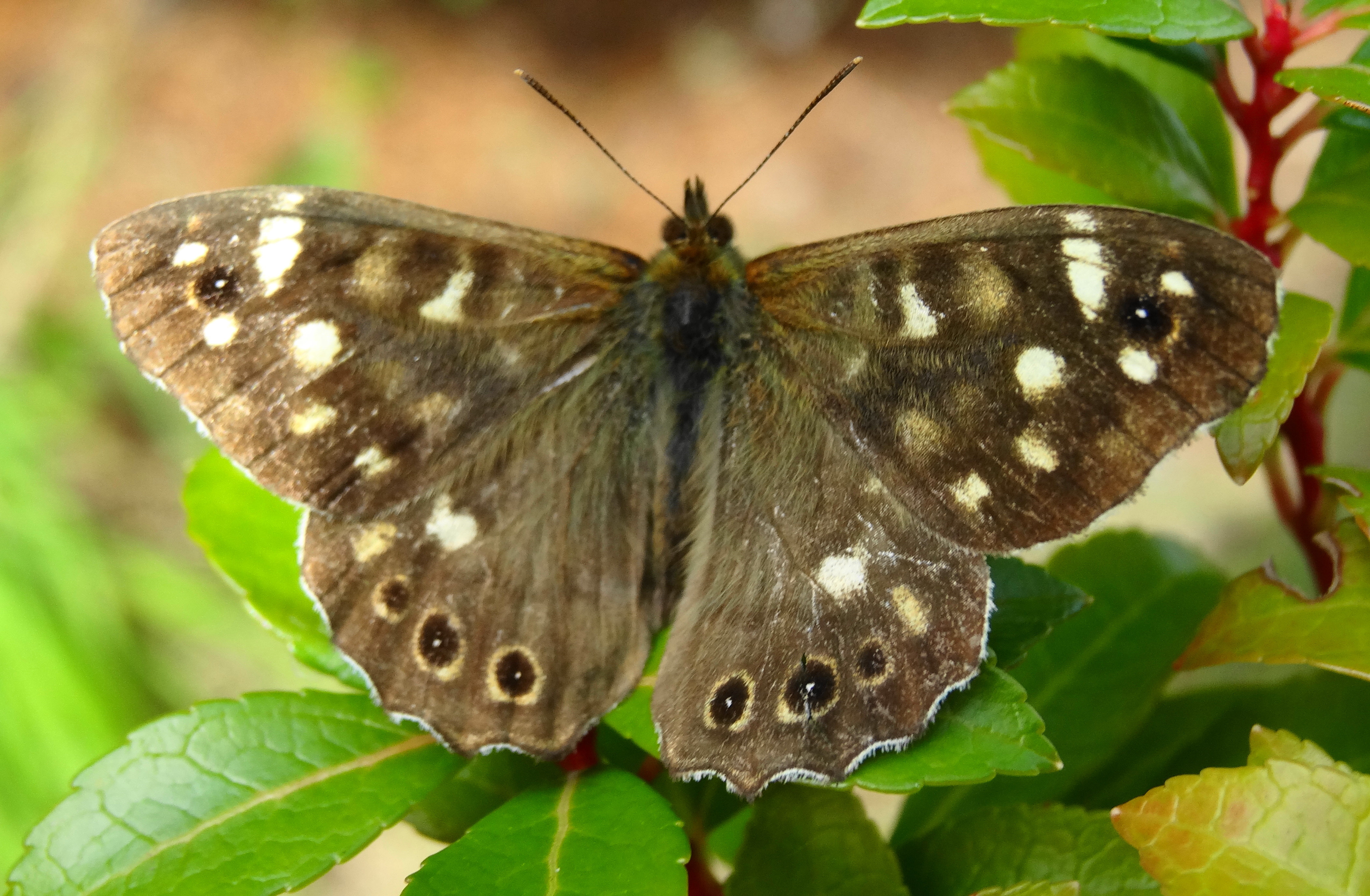 |
| Speckled Wood in my garden 2 |
Discoveries at a nursery
 | |
| Small Tortiseshell on a Verbena plant |
I witnessed many small tortiseshells looking like they were at a feast. I didn't see any other breed of butterfly whatsoever while I was there and apart from bees and insects the tortiseshells had it all to themselves.I began to observe what plants attracted them. There were tall deep blue verbena plants and lots of wallflowers. There was also a healthy looking sedum bush in a plummy off pink colour. While the wallflowers and verbenas were covered in visitors the sedum didn't have a single butterfly or bee for that matter visiting it that I was witness to.
Whether thats just down to tortiseshells preferences or the fact like my own three hydrenga bushes at home you cannot always believe what you read I just dont know.I nearly forgot to mention that on the road leading to the nursery are three or four heavily fenced off fields. They seem home to what can only be described as forests of budleia plants growing wild. The budleias are at least 8 or 9 feet tall so have obviously been there some time.
What I wouldn't give to explore in there with a camera. I in the end having set out to buy a sedum I instead settled for several wallflowers.
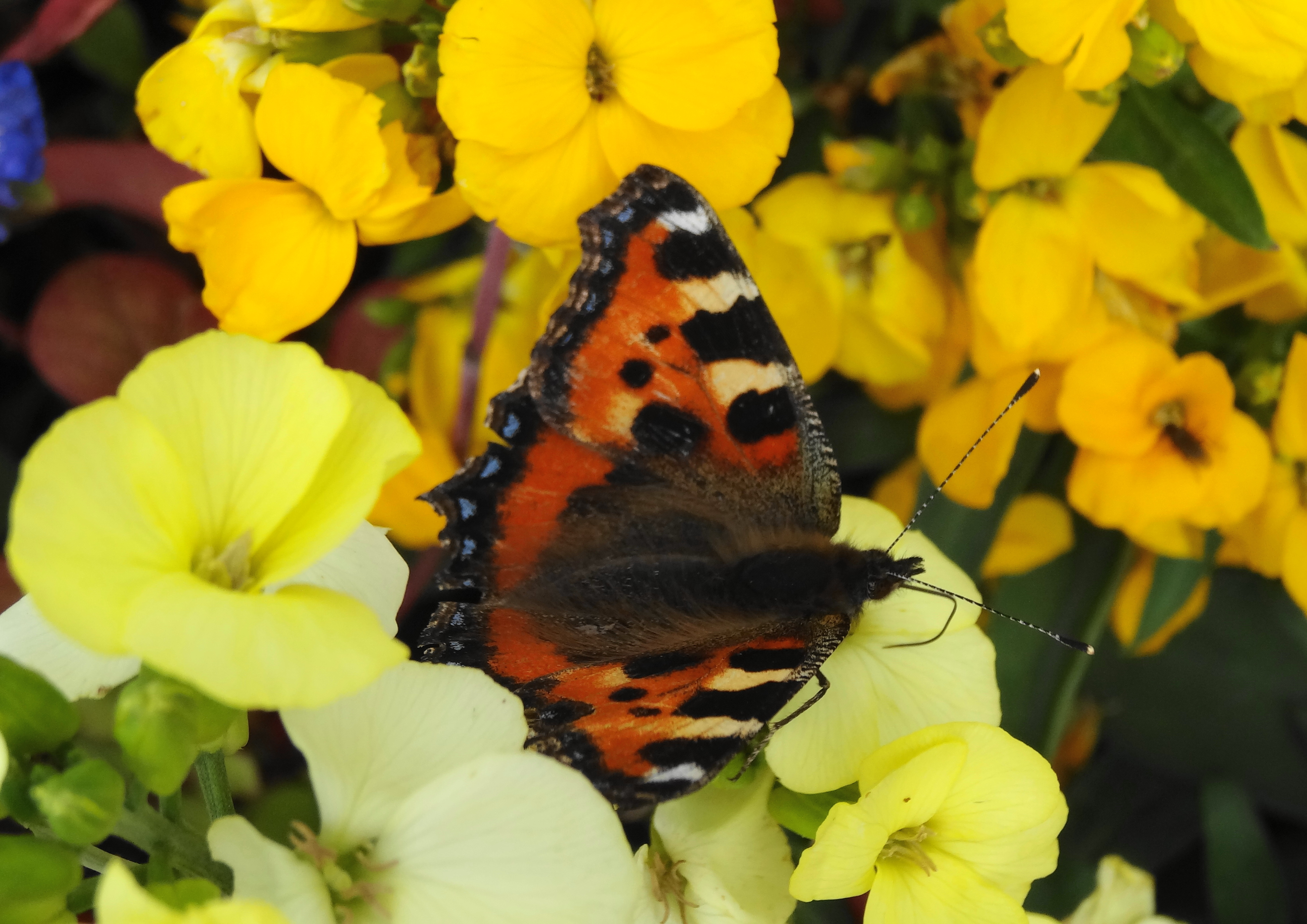 |
| Small Tortiseshell feeds on a wallflower |
I assume September is not a good time of year to see these plants at their best. While that put me off the butterflies just kept feeding away on the verbena blooms. I had my camera and was able to grab some nice pictures of the visit which I subsequently posted on my flickr page.
Wednesday 14 September 2016
Wild flower and seed companies
Here are the contact details for some companies which supply wild flowers and plants which butterflies depend on
Heritage Seed Co Ltd
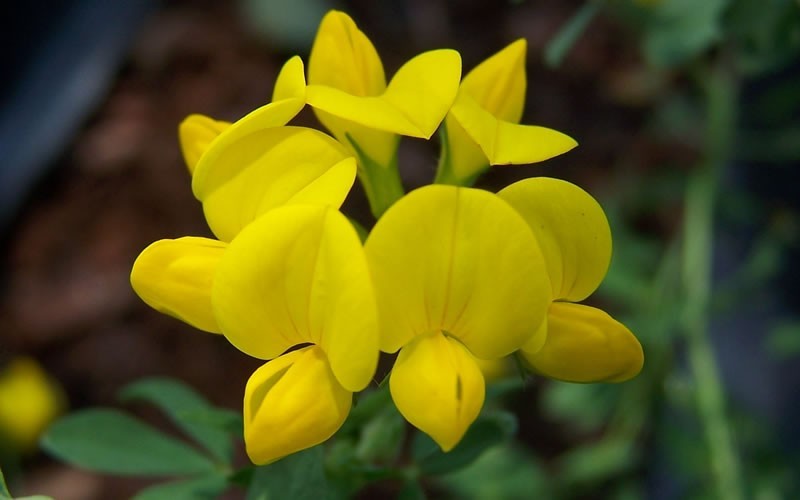 |
| BIRDSFOOT TREFOIL |
Heritage Seed Co Ltd
TEL: 01305834504
British Flora Co Ltd
TEL: 01684212027
Emorsgate Seeds Ltd
TEL: 01553829028
Butterfly Larvae Food Plants:
Common Blue = Birdsfoot Trefoil
Comma = Common or Small nettle
Clouded Yellow = Clovers, Birdsfoot Trefoil
Common Blue =
Birdsfoot Trefoil
Dark Green Fritillary = Common Dog Violet
Grayling = Marram Beach Grass
Green-veined White = Garlic Mustard
Holly Blue = Snowberry bush Bramble
Orange-tip = Garlic Mustard; Lady Smock (aka Cuckooflower)
Painted Lady = Thistles
Peacock = Common or Small nettle hops
Red Admiral = Common or Small nettle
Ringlet = Cocks foot grass, false brome
Silver washed Fritillary = Common Dog Violet
Six-spot Burnet = Birdsfoot Trefoil
Small Copper = Sorrel, Sheep Sorrel, Docks
Small Heath = Fescue grass
Small Tortiseshell = Common or Small nettle
Speckled Wood = cocks foot grass, false brome
White Large = Nasturshums. cabbages
White Small = Nasturshums, cabbages
------------------------------------------------------------
Those above in italics and underlined are species that I have never seen. I include them here anyway for the benifit of those lucky enough to have done so.
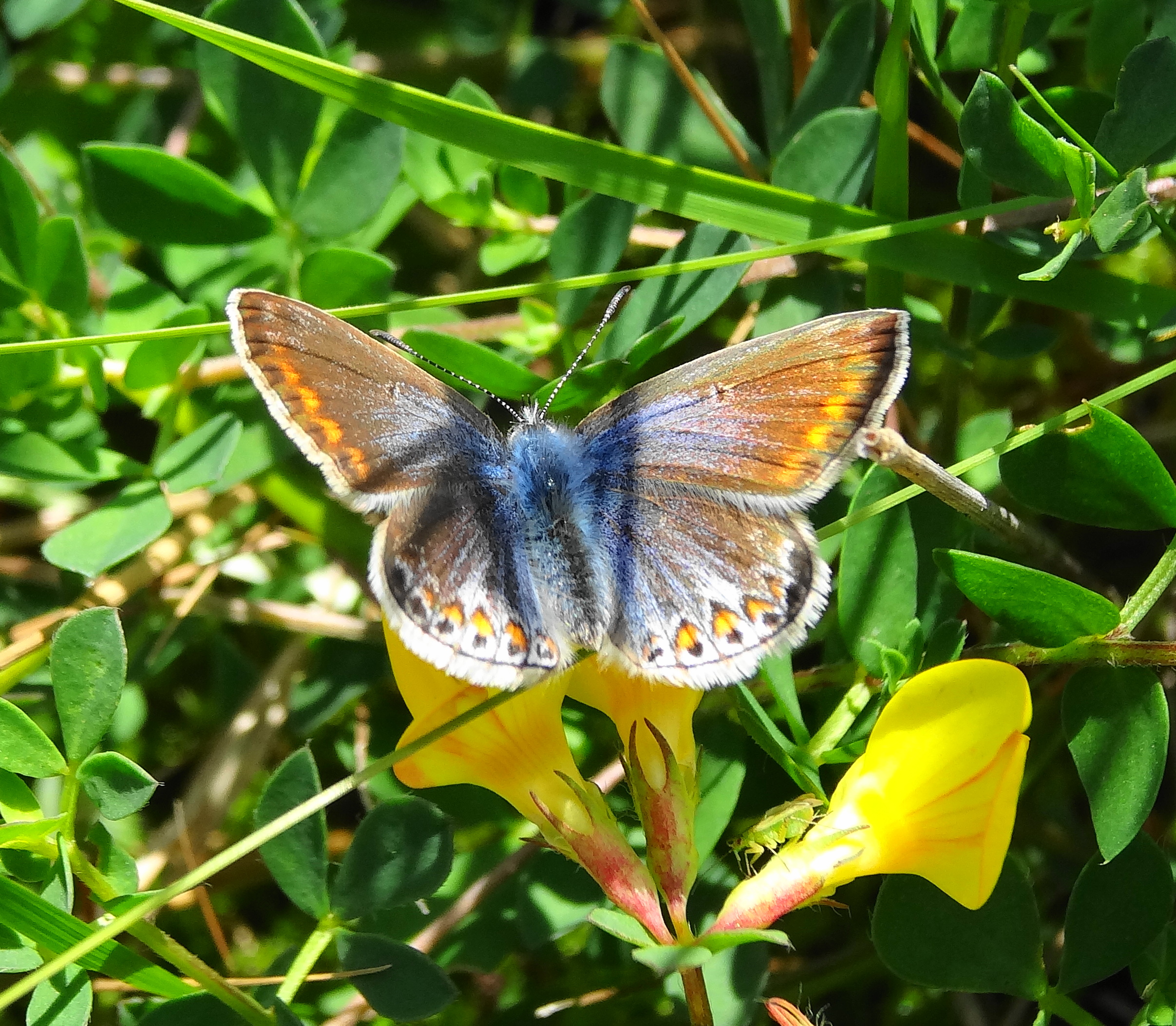 | |
| Common Blue Female on Birdsfoot Trefoil plant |
Comma = Common or Small nettle
Clouded Yellow = Clovers, Birdsfoot Trefoil
Common Blue =
Birdsfoot Trefoil
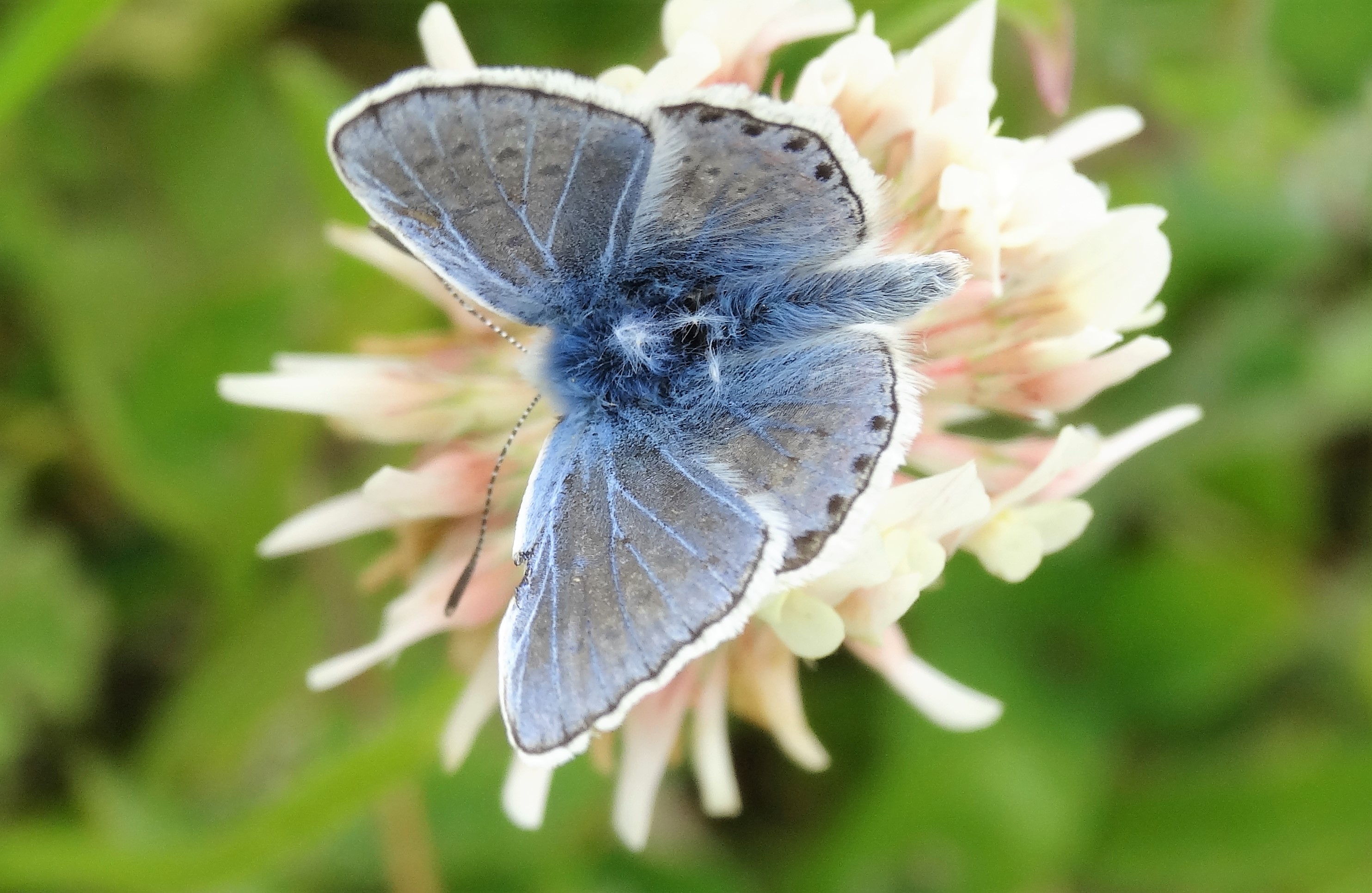 |
| Common Blue Male on white clover |
Grayling = Marram Beach Grass
Green-veined White = Garlic Mustard
Holly Blue = Snowberry bush Bramble
Orange-tip = Garlic Mustard; Lady Smock (aka Cuckooflower)
Painted Lady = Thistles
Peacock = Common or Small nettle hops
Red Admiral = Common or Small nettle
Ringlet = Cocks foot grass, false brome
Silver washed Fritillary = Common Dog Violet
Six-spot Burnet = Birdsfoot Trefoil
Small Copper = Sorrel, Sheep Sorrel, Docks
Small Heath = Fescue grass
Small Tortiseshell = Common or Small nettle
Speckled Wood = cocks foot grass, false brome
White Large = Nasturshums. cabbages
White Small = Nasturshums, cabbages
------------------------------------------------------------
Those above in italics and underlined are species that I have never seen. I include them here anyway for the benifit of those lucky enough to have done so.
My Butterfly observations
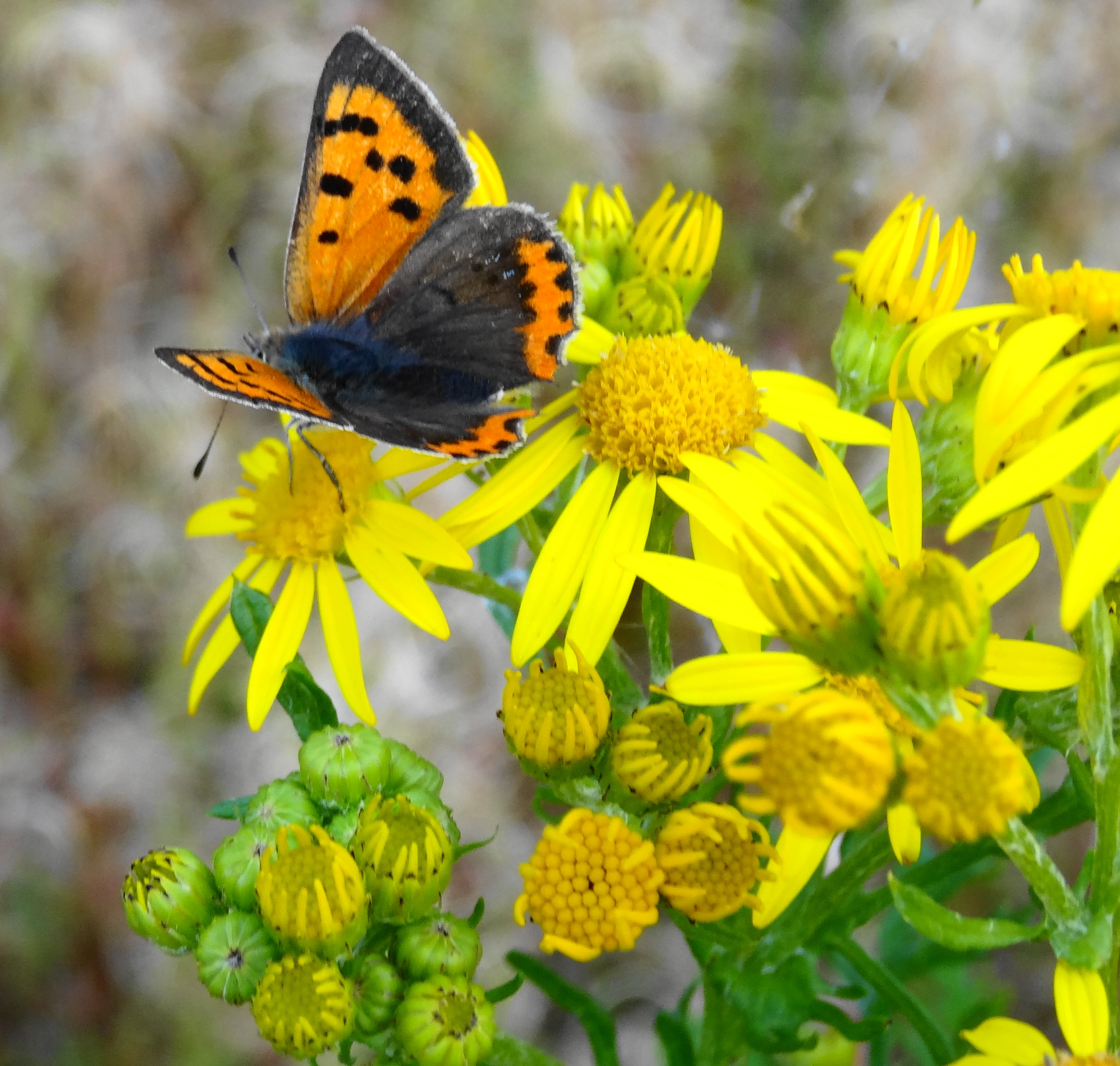 | |
| Small Copper on Ragwort |
Its 3 years since I became interested in butterflys and im now slowly progressing to include moths as well. Theres a field near where I live which has been totally uncultivated and is the source of much of my observations during that time.
What prompted this blog was the disappearance of the small copper butterfly which in previous years I observed and photographed in the said field. It prompted me to wonder why they have disappeared and to wonder what if anything I could do about it. I should say that I had picked this particular species as my avatar on my flickr photo site so its vanishing was a particular blow.
(The following pic shows why its called the "SMALL" copper:)
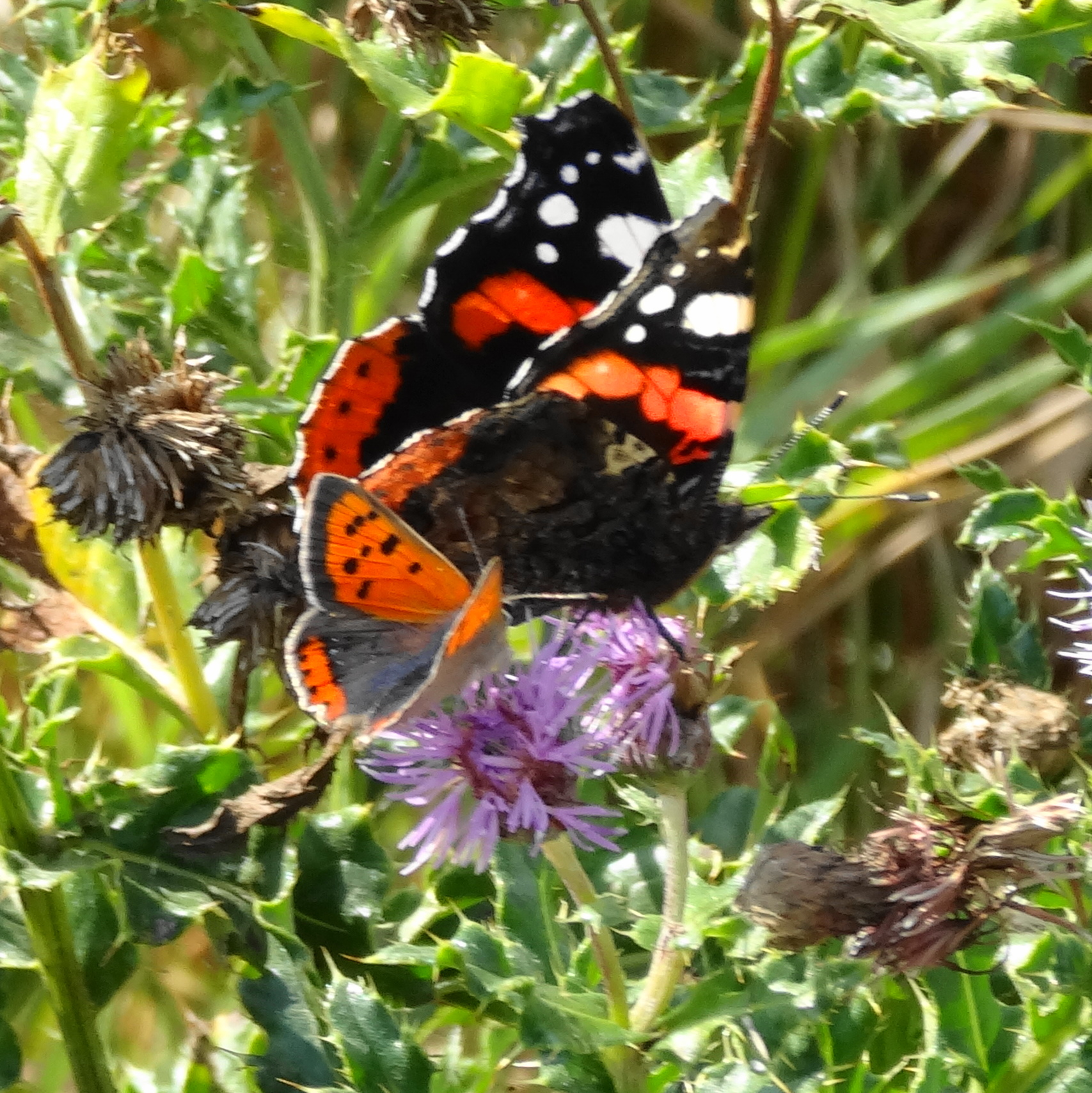 | |
| Small Copper & Red Admiral on Knapweed August 2014 |
I have visited a tropical butterfly house locally and it got me wondering what the possibilities would be of creating a similar native species house its worth discussion at the very least. Well rant over for now but its just the beginning!
Subscribe to:
Posts (Atom)

